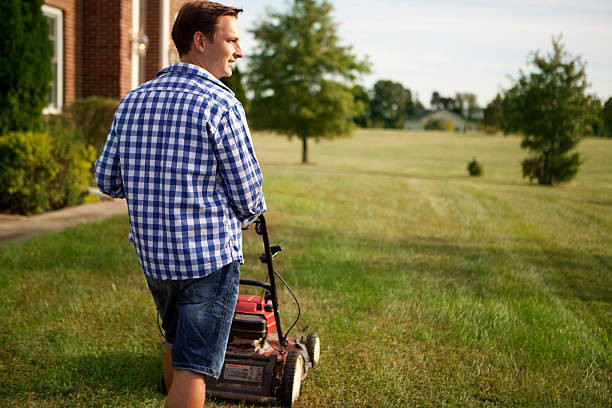Summer Lawn Health: Tips for Preventing and Managing Lawn Diseases
Florence, United States - June 10, 2025 / ILD Innovative Landscape Design /
Summer is the season when your lawn gets the most attention. Backyard barbecues, kids playing, pets running around—it all happens on your turf. But while you’re enjoying the sunshine, your lawn might be fighting a silent battle against heat, humidity, and disease. Without the right care, all your efforts to grow a lush, green lawn can quickly go to waste. So how do you protect your grass during the peak of summer? Let's dig into some real, actionable tips to prevent lawn diseases and keep your yard looking like a million bucks.
Understanding the Summer Threats to Your Lawn
During the warm months, lawns face an increased risk of disease. Why? Because heat and humidity create the perfect environment for fungal infections and pests to thrive. Combine that with irregular watering, compacted soil, or poor mowing habits, and you've got a recipe for lawn disaster. Fungal diseases like brown patch, dollar spot, and powdery mildew become more active and can spread fast. You’ll know something’s wrong when you spot discolored patches, thinning grass, or a powdery residue.
The biggest problem with lawn disease is that it often goes unnoticed until it's too late. That’s why prevention and early detection are key. Think of your lawn like a living, breathing organism. When it's stressed—be it from foot traffic, heat, or lack of nutrients—its natural defenses weaken, making it vulnerable to infections. Learning the early signs of disease can save you a lot of money, time, and frustration in the long run.
Watering Wisely: Timing and Technique Matter
It might seem like more water is better during hot months, but the truth is that how and when you water matters more than how much. Most lawn diseases are caused or worsened by overwatering or watering at the wrong time of day. Wet grass blades overnight are a breeding ground for fungi. The ideal time to water is early in the morning, preferably before 10 a.m. This allows the water to soak into the soil and gives the grass time to dry before nightfall.
Deep and infrequent watering is the golden rule. Shallow watering leads to shallow roots, which weakens your lawn and makes it more prone to disease. Instead, aim to water your lawn deeply about two to three times a week. Your goal is to provide about 1 to 1.5 inches of water per week, including rainfall. Use a rain gauge or a small can to measure your output if you're not sure how much your sprinkler system provides.
If you see water puddling or running off, you might be dealing with compacted soil or poor drainage. Aeration and proper grading can fix these issues and ensure water reaches the roots where it’s needed most.
Mowing Smart: It’s More Than Just Cutting Grass
Mowing might seem like the simplest lawn care task, but doing it incorrectly can invite disease and stress your turf. The golden rule? Never cut more than one-third of the grass blade at a time. Cutting your grass too short—known as “scalping”—weakens the root system and exposes the soil, allowing diseases to spread more easily.
The ideal mowing height depends on your grass type, but generally, you should keep it around 2.5 to 4 inches tall in the summer. Taller grass shades the soil, retains moisture better, and grows deeper roots. That added height also helps crowd out weeds and keeps disease at bay by improving airflow around the blades.
Always use a sharp mower blade. Dull blades tear the grass instead of slicing it cleanly, which causes jagged edges that are more susceptible to disease. If you notice the tips of your grass turning brown after mowing, your blade might need sharpening. Clean your mower regularly, too. Just like any other garden tool, it can carry and spread fungal spores if left dirty.
Fertilizing for Strength, Not Just Growth
Fertilizer can do wonders for your lawn, but too much or the wrong type can do more harm than good, especially in summer. A stressed lawn isn’t the time to dump a bunch of nitrogen on it. While nitrogen promotes fast growth, it can also stress your grass under hot conditions and make it more vulnerable to disease.
Instead, opt for a balanced fertilizer with a slow-release formula. This supports steady growth and strengthens the lawn's natural defenses. Look for products with micronutrients like potassium and phosphorus. Potassium helps your lawn handle stress and builds resistance to disease, while phosphorus promotes root growth.
The best time to fertilize depends on your grass type. Warm-season grasses like Bermuda, Zoysia, and St. Augustine benefit from summer feeding. But for cool-season grasses like Kentucky bluegrass and fescue, it’s best to hold off and fertilize in the fall. Over-fertilizing in summer can burn your lawn or trigger diseases, so always follow the label instructions and avoid applying during a heatwave.
Air It Out: Aeration and Dethatching Tips
Over time, lawns can become compacted due to foot traffic and regular use. Compacted soil makes it hard for water, nutrients, and air to reach the root zone. On top of that, a layer of thatch—a mix of dead grass, roots, and debris—can build up on the surface and create a moist environment that encourages disease.
Aerating your lawn helps relieve soil compaction and allows your grass to breathe. The best time for aeration depends on your grass type: late spring to early summer for warm-season grasses, and fall for cool-season types. Use a core aerator that removes plugs of soil rather than just poking holes.
Dethatching, on the other hand, involves removing thatch that's more than half an inch thick. You can rent a dethatching rake or power dethatcher, depending on the size of your lawn. It’s best to dethatch during your grass's active growing season so it can recover quickly. A properly aerated and dethatched lawn is less prone to disease and grows stronger, deeper roots.
FAQs
1. How do I know if my lawn has a disease or just needs water?
Look for symptoms like brown patches that don't green up after watering, a powdery residue, or slimy areas. If watering doesn’t help within a few days, you might be dealing with a disease.
2. Is it okay to water my lawn at night?
No. Watering at night keeps the grass blades wet for too long, encouraging fungal growth. Early morning is the best time to water your lawn.
3. Should I bag or mulch my grass clippings during summer?
If your lawn is healthy and disease-free, mulching is great—it returns nutrients to the soil. But if you suspect disease, it's better to bag and remove clippings to prevent spreading.
4. Can I prevent lawn disease without using chemicals?
Absolutely. Proper watering, mowing, aeration, and overseeding with disease-resistant grass varieties can go a long way in preventing issues without needing fungicides.
5. How often should I sharpen my mower blades?
Aim to sharpen your blades at least once a month during peak mowing season. If you mow more frequently or notice torn grass tips, do it more often.

Contact Information:
ILD Innovative Landscape Design
2027 Rosedale St.
Florence, SC 29501
United States
Scott Brokaw
(843) 230-1036
http://www.ildsc.com/
Original Source: https://ildsc.com/media-room/#/media-room


